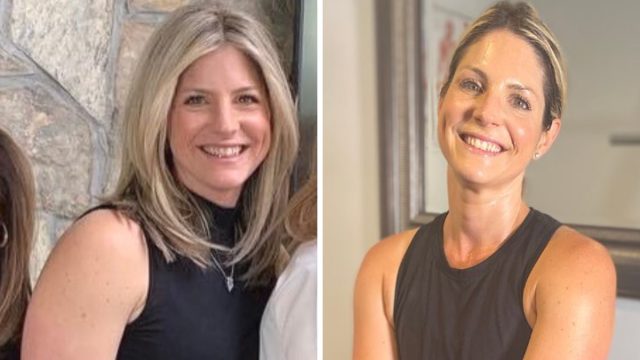Nutritionist Reveals the 6 Morning Habits That Helped Her Lose 20 Pounds
Are you looking for a few simple and realistic health habits that will enable you to lose weight? Grace Macena is a social media influencer and "macro focused" nutritionist who promotes sustainable weight loss. In a recent viral post, she reveals some of the most helpful habits that enabled her to achieve weight loss success. "These helped me lose 20 pounds, and I will never gain it back," she writes in the Instagram post, revealing her top 6 "simple and realistic" habits.
Focus on Volume Eating
Her first healthy habit is focusing on volume eating. "I have a big appetite, so l will try to make my meals as filling as possible," she says in her post. "Add egg whites to oatmeal, add extra veggies to your meals, use Greek yogurt instead of sour cream, add berries to your yogurt," she recommends. "This will ensure that you feel full without adding a bunch of calories.:
Walk 30 Minutes a Day
The second habit? Get your steps in. "Go on one 30-minute walk a day," she says. "If the gym stresses you out or you're confused, don't do it. Start with a simple walk a day. Start somewhere. Do something you enjoy."
Have Healthy Snacks on Hand
Her third habit? "Have healthy snacks with you everywhere you go," she suggests. "I carry snacks when I know I'll be out of the house for long. If you wait until you are starving, nothing good happens. I always grab a piece of fruit before leaving the house, just in case."
Enjoy the Process
Next, "Enjoy the process and focus on doing the best you can every single day!" she explains. Say to yourself, 'I am in the process of becoming the healthiest version of me.' You can let one reading on a scale or one day of eating end your journey. Toughen up."
RELATED: I Ran 200 Marathons and These 12 Running Rules Changed My Life After 40
Nourish Your Body with Food
She also recommends looking at your diet as nourishment. "I would focus on learning what food brings to my body, eating macro balanced," she says. "Look at your meal. What protein am I eating? What veggies, starch, and fat?"
6. Stop Drinking Your Calories
Lastly, she recommends avoiding drinking your calories. "Honestly, I would say goodbye to alcohol," she points out. "It doesn't do anything for you, but that is your choice. Or at least limit it outside your house. Empty calories that WILL cause you to lose progress."
And, Track Macros
In another post, she recommends incorporating some other healthy habits, including macro tracking. "Start learning about what fuels your body and the quality of your food vs simply counting calories. Focus on fiber and whole foods and watch your body and energy transform. It's not about being tedious, and it's about really learning how to look at food and what each food gives your body. You will never need a diet again!" she writes.
RELATED: 5 Training Mistakes That Kept This Fitness Expert From Burning Fat
Lift Weights
Also, she recommends strength training. "Lift weights 3-4x a week, 30 mins/ session, following progressive overload. You don't need to do hours, and like me, you can do it from home," she says.
Amp Up Protein and Fiber Intake
Eat more protein, she continues. "If you want to lose weight, feel full, and change how your body looks, aim to eat 25g-30g of protein per meal and at least 100g per day." As for fiber, it "is your secret to helping reverse insulin resistance, keep you full, anti-aging, heal your gut," she says.
RELATED: She Dropped 80 Pounds By Ignoring Everything Weight Loss Experts Told Her
Wake Up Earlier
Her last suggestion? Wake up earlier. "I said it. You need time for yourself. Waking up with the kids and someone asking you to get something is always hard for me. I don't get up early because I'm tough; I do it because I need it to be a good person." And if you enjoyed this article, take advantage of these 15 Quick Ways to Lose Body Fat Percentage in a Week.





